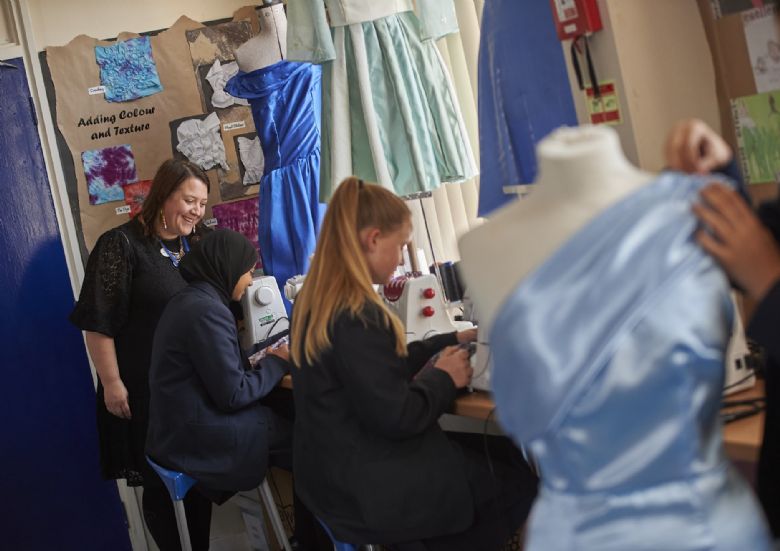KS4 Design Technology
| Curriculum Intent and Overview |
|---|
|
The curriculum covers a wide range of opportunities which run alongside a rich extra-curricular timetable. This includes both creative and STEM elements. Students are extremely proud of their achievements, and they really value the supportive nature and encouragement the department gives them. The curriculum develops and promotes:
|
|
|
GCSE
Exam Board: AQA
Specification Number: 8552
What will be studied?
New technologies and STEAM are an important part of our curriculum, and we use state of the art equipment including CAD/CAM (Computer Aided Design/Computer Aided Manufacture). Design Technology is offered at GCSE where students can opt to take a resistant materials or textiles focus, enabling progressing into the engineering and design industries.
This GCSE Design Technology course will build upon the design-and-make skills used in Years 7-9, developing knowledge and understanding within resistant materials or textiles.
Design Technology is a subject where students gain practical skills that are relevant to everyday life, both at home and at work. They use and develop many key skills, especially communication, numeracy, problem solving and ICT, and become effective independent learners. The coursework is demanding, but the final products and portfolios give most students a sense of real achievement and satisfaction, as well as something to be proud of at home and in future interviews. The new controlled assessment regulations mean that most of the coursework will be done in school, not at home.
both at home and at work. They use and develop many key skills, especially communication, numeracy, problem solving and ICT, and become effective independent learners. The coursework is demanding, but the final products and portfolios give most students a sense of real achievement and satisfaction, as well as something to be proud of at home and in future interviews. The new controlled assessment regulations mean that most of the coursework will be done in school, not at home.
Topics covered will include: Knowledge and understanding of properties of materials (paper & card, then at least one of metals, woods, plastics, or smart materials). Skills in the relevant material including use of a range of tools, machines and processes, CAD/CAM, industrial production, different types of drawing and rendering, model making and prototypes, developments (nets), forming (e.g. vacuum forming), packaging, marketing and advertising. Background information such as evolution of product design, product development, environmental issues, human factors, quality control and health and safety.
ICT will be used extensively for desk top publishing, graphics (including drawing, editing digital photos and scanned pictures), spreadsheets and charts, nets, flow charts and CNC work.
Learning Methods
We try to teach as much of the theory as we can through practical work. For example in Year 10 students might be designing and making a storage unit, or textile garment based on a design movement.
Group work, PowerPoint presentations, disassembly and research are other teaching styles used in lessons.
We hope to give students the opportunity to make at least one visit during the course or to hear from a visiting speaker, particularly concerning the industrial applications part of the course, but this is not always possible.
How is the course assessed?
There is one written exam paper of 2 hours carrying 40% of the total marks, including a design question for which you get some prior information and a chance to research before the exam.
60% of the final grade is dependent on a design-and-make project. This will begin in the summer term of Year 10 and will take approximately 45 hours of school time.
In this project students will be given a choice of titles to investigate and then individuals research or recall relevant knowledge and make informed decisions about what is required for a solution. Students have to provide a variety of ideas, plan and carry out the making of a solution and finally test and evaluate the results. The use of ICT in designing, making and presenting your work is very important.
Students will be working individually for most of this time, so they need to show considerable independence and make sure that they meet the deadlines for each part of the project.
What websites are recommended?
BBC Bitesize and AQA for past papers
What equipment is needed?
A calculator, protractor, ruler, pen and pencil and coloured pencils are essential at all times.